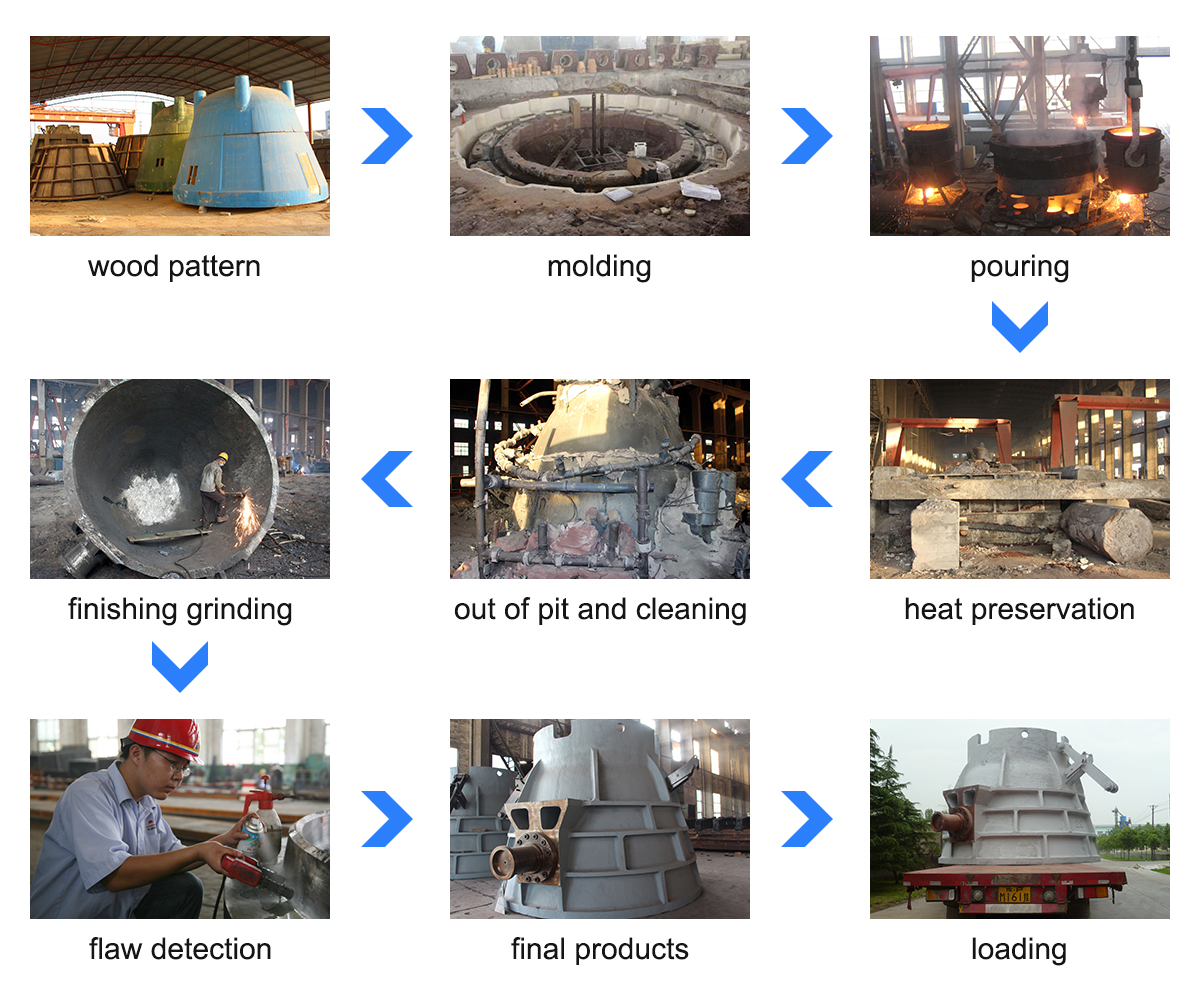This is the first step in designing a continuous caster. First, the product end-use dictates the quality, grade and shape of the steel casting. Considerations are then made based on desired annual tonnage, liquid steel availability, and anticipated operating hours. Then, the machine design considerations can be made for the number of strands and cast speeds to match the liquid metal supply from the melt shop.
Quality and grade considerations are then utilized in determining various design parameters of the casting machine such as its length, vertical height, curved or straight mold, water versus water/air secondary cooling, electromagnetic-stirring, etc.

A tundish, located above the mold to feed liquid steel to the mold at a regulated rate.
A primary cooling zone or water-cooled copper mold through which the steel is fed from the tundish, to generate a solidified outer shell sufficiently strong enough to maintain the strand shape as it passes into the secondary cooling zone.
A secondary cooling zone in association with a containment section positioned below the mold, through which the still mostly-liquid strand passes and is sprayed with water or water and air to further solidify the strand
Except straight Vertical Casters, an Unbending & Straightening section.A severing unit (cutting torch or mechanical shears) to cut the solidified strand into pieces for removal and further processing.
Prev:Great Wall Steel Casting Company Slag Pot Repair/Replacement
- Tel: +8619838076183
- Whatsapp: +8619838076183
- E-mail: casting@chaeng.co
- Skype : GreatWall1958


